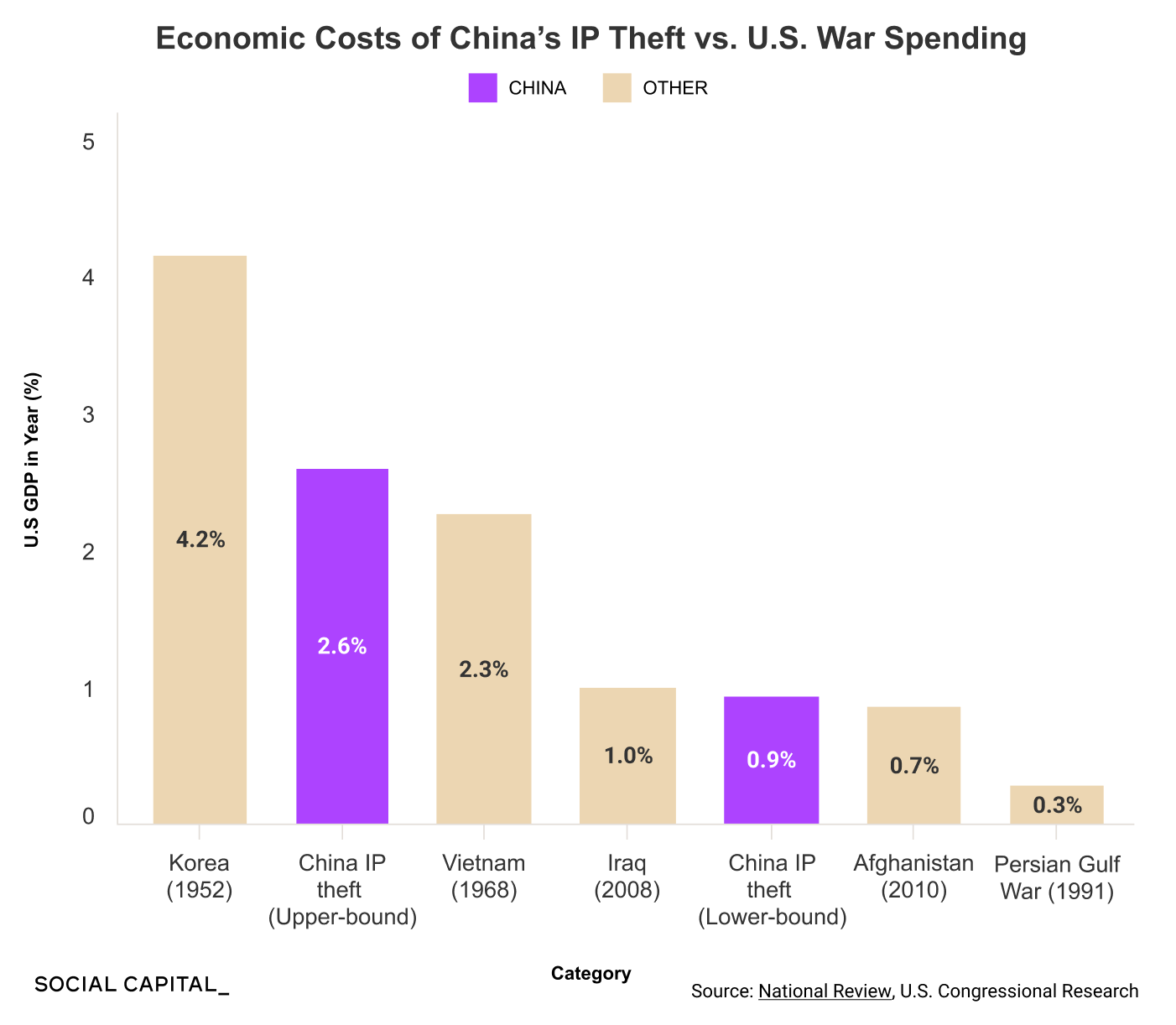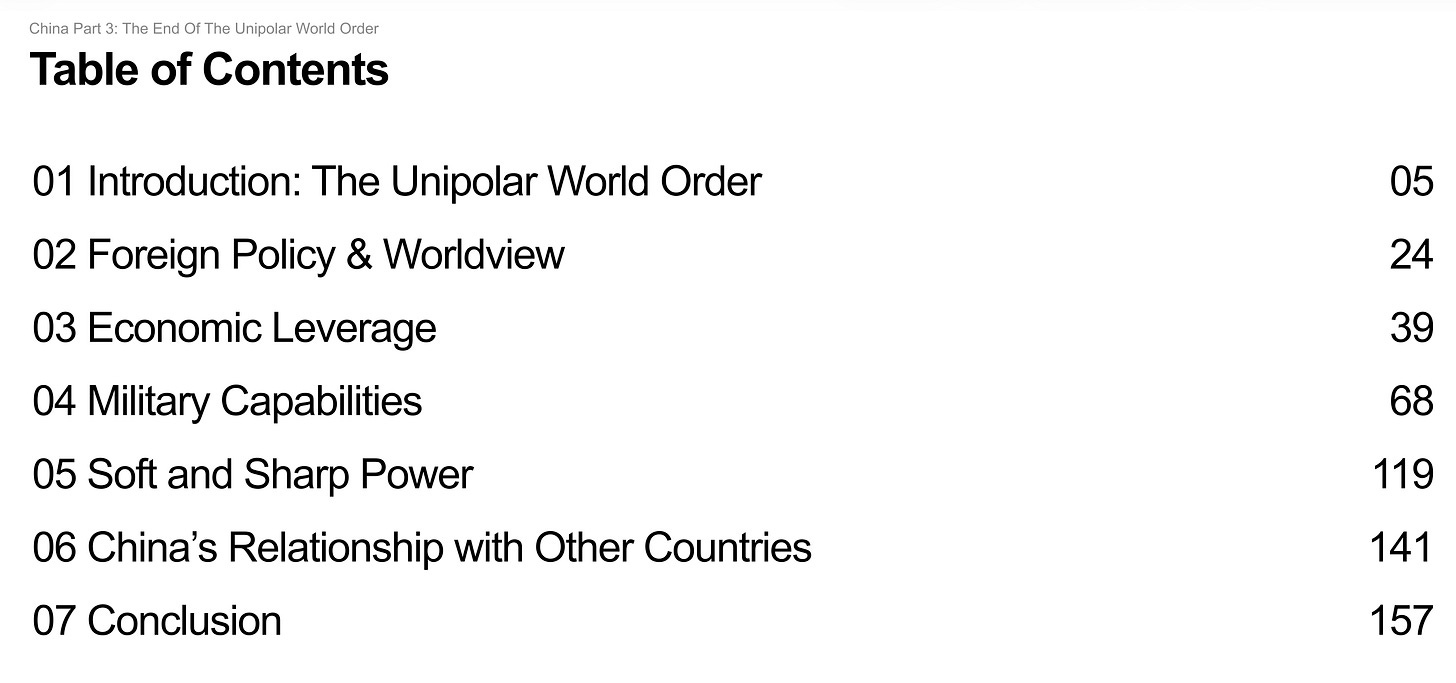Deep Dive: China’s Global Strategy and Power Balance
What role does China play in the global economy and what role does it want to play? Does Beijing see the U.S.-led world order as something to join, bend, or break?
Until recently, the modern United States had never faced a true systemic competitor.
Neither the Soviet Union nor the combined economies of Germany, Italy, and Japan during WW2 ever accounted for more than 60% of U.S. GDP. When the Soviet Union began to disintegrate in 1990, Charles Krauthammer declared America the world’s only superpower, writing: “the immediate post-Cold War world is not multipolar. It is unipolar.”
In retrospect, 2001 marked a turning point.
The U.S. supported China’s admission into the WTO, hoping it would open China’s market and moderate its authoritarian regime. That didn’t happen. Instead, China used market access to build industrial capacity through currency manipulation, intellectual property theft, and massive state subsidies.
The “China Shock” caused 59.3% of U.S. manufacturing job losses between 2001-2019.
Today, China makes up 28.9% of global manufacturing output compared to America’s 17.2%. It produces 13 times more steel and installed more solar capacity in 2023-2024 than the U.S. has built in its entire history.
Many cite the “Thucydides Trap” - in 12 of 16 cases over 500 years, when a rising power challenged an established one, war followed.
But a more instructive case is Britain from 1870-1914.
In 1870, Britain produced 31.8% of the world’s manufactured goods. By 1913, it produced even more in absolute terms. Yet Britain felt weaker.
What changed?
America’s share jumped from 23% to 32%, and Germany’s from 13% to 15%, while Britain’s plummeted to 14%.
In 1914, Britain went to war with Germany. The war dragged on for four years. Britain could not defeat Germany alone. It required American industrial might to tip the balance.
What matters isn’t how strong you are, but how your strength compares to others.
In some ways, the United States today stands where Britain stood in 1900.
America is still extraordinarily powerful, with an unmatched military, leading technologies, and deep cultural influence.
But China’s manufacturing capacity is now 1.7x America’s. Chinese builders can produce warships 200 times faster. In renewable energy infrastructure, China is deploying at a pace America hasn’t matched.
For three decades after the Cold War, the U.S. operated without peer competitors. It could set rules unilaterally and shape institutions to reflect American values.
That era is ending - not because America is weak, but because China has built comparable capabilities.
This deep dive examines three questions:
1) What role does China play in the global economy and what role does it want to play?
2) Does Beijing see the U.S.-led world order as something to join, bend, or break?
3) What does the world look like if China succeeds, and if it fails?
We’ll examine China’s economic leverage, military capabilities, soft power operations, and the world it’s building through BRICS and the AIIB.
Most importantly, we’ll look through the lens that matters: relative power. You can grow stronger in absolute terms while becoming weaker in relative terms, and it’s the relative balance that determines what you can accomplish.
I hope you enjoy reading and learning about China with me. Let me know what you think in the group chat and comment section.
Chamath
Disclaimer: The views and opinions expressed above are current as of the date of this document and are subject to change without notice. Materials referenced above will be provided for educational purposes only. None of the above will include investment advice, a recommendation or an offer to sell, or a solicitation of an offer to buy, any securities or investment products.
Deep Dive below ↓


